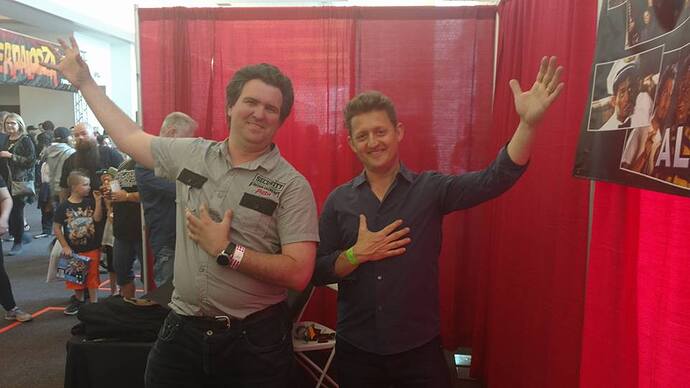Originally published at: The Evolution of Cosplay: A Look Into the Past and Tips for Beginners - People of Con
Author: Joe Di Gaetano
The journey of ‘cosplay,’ initially referred to as ‘costuming,’ has been dynamic and exciting since its inception in the late 1930s in North America. At that time, the pursuit of cosplay was not as meticulously detail-oriented as it is today. Participants had to dress appropriately for the genre rather than replicate a character’s look to a tee. Forrest J. Ackerman, the trailblazer in this domain, brought a futuristic twist to his attire for a sci-fi convention. In the following years, such conventions began to morph into grand masquerade balls, with prizes awarded to the most imaginative costumes.
In the East, Japanese media, such as the manga series Urusei Yatsura, and the television series, Mobile Suit Gundam, played pivotal roles in fostering the cosplay culture. Japanese college students donned outfits mimicking their favorite characters and relished re-enacting beloved scenes, much like the masquerading practice borrowed from North America. This added a fresh layer of exhilaration to conventions, offering fans an immersive medium to display their profound admiration for the series.
The term ‘cosplay,’ a fusion of ‘costume’ and ‘play,’ was only coined in 1984 by the Japanese reporter Nobuyuki Takahashi when he attended Worldcon in Los Angeles. In his efforts to convey the essence of ‘masquerade’ to a Japanese audience, he found the term ‘too old-fashioned,’ thus, ‘cosplay’ was born as a modern, fitting descriptor.
Over time, cosplay has evolved into more than a hobby—it’s become a lifestyle. Regardless of the convention, one is bound to encounter someone engrossed in embodying a character, be it a major icon from a blockbuster movie or an obscure character from a lesser-known film scene.
For those eager to dive into the world of cosplay, you may wonder: how does one get started? Even though the journey could seem complicated at first glance, it’s pretty straightforward. Start by delving into your favorite comic books, movies, video games, or TV shows. Once you identify a character you’re drawn to, research their look online. Remember, as a beginner; it’s wise to start simple. A great tip for beginners is to check clothing stores for items similar to your character’s wardrobe that can be tweaked to match your desired look.
When you’ve grasped the basics, you might want to enhance your costume with more intricate additions such as weaponry and effects. These could range from buying convention-available props to constructing your own. Some cosplayers even venture into the realm of special effects like smoke generators or LED lights embedded in their outfits.
Furthermore, the vast cosmos of cosplay also houses various intriguing sub-genres. One such example is gender-bending cosplay, which involves swapping the gender of a known character while retaining their signature style. Another steadily emerging style is Steampunk cosplay, where a character’s aesthetic is refashioned with industrial or vintage elements.
Many conventions offer cosplay panels for beginners seeking guidance, posing for photos, or even for those who aspire to design their weapons. These forums can be immensely helpful for newcomers.
Remember, when starting with cosplay, it’s crucial to keep it simple. Start with a look that feels right and gradually expand your horizons to express your creativity. While cosplay can be a fun and rewarding hobby, it’s worth noting that the level of detail involved can make it a potentially expensive endeavor.
References: An Overview of Cosplay: Exploring the Subculture by Ysabel Go
